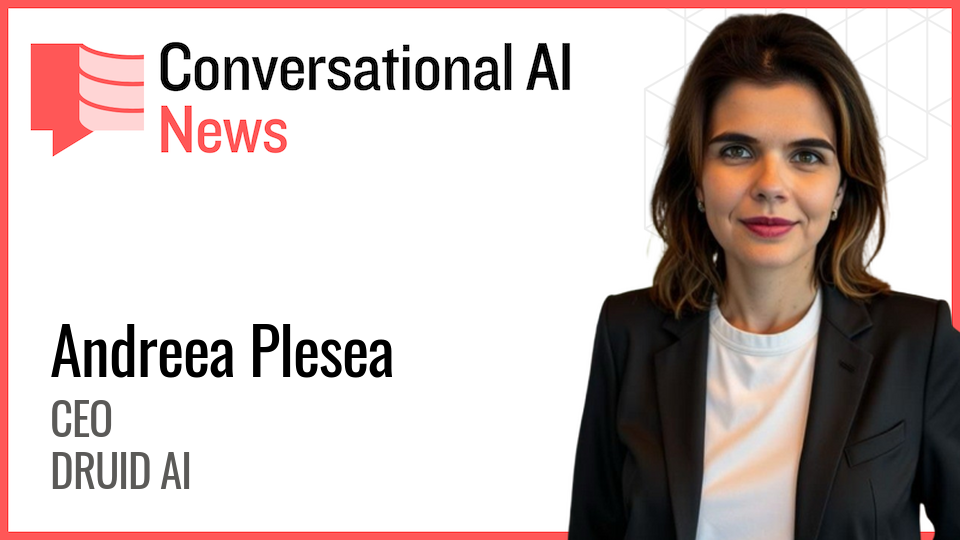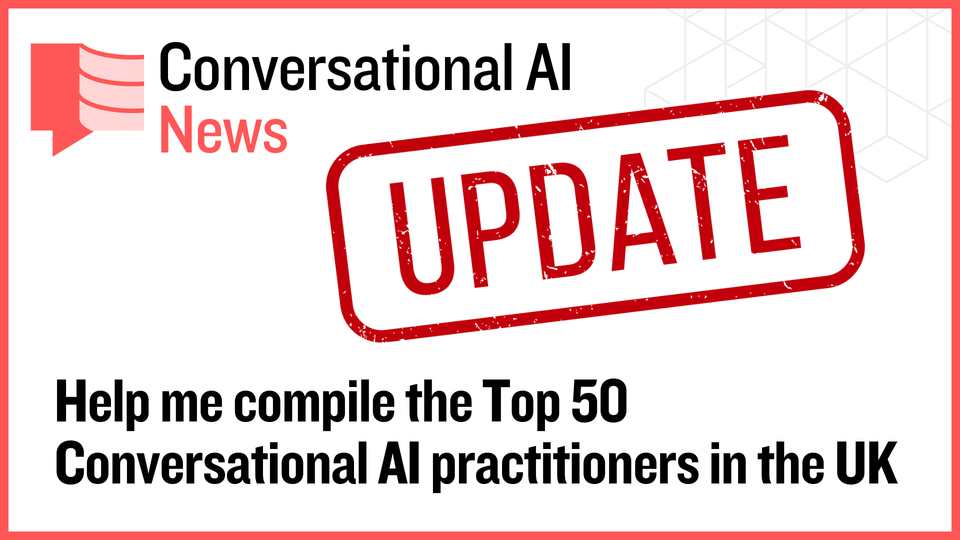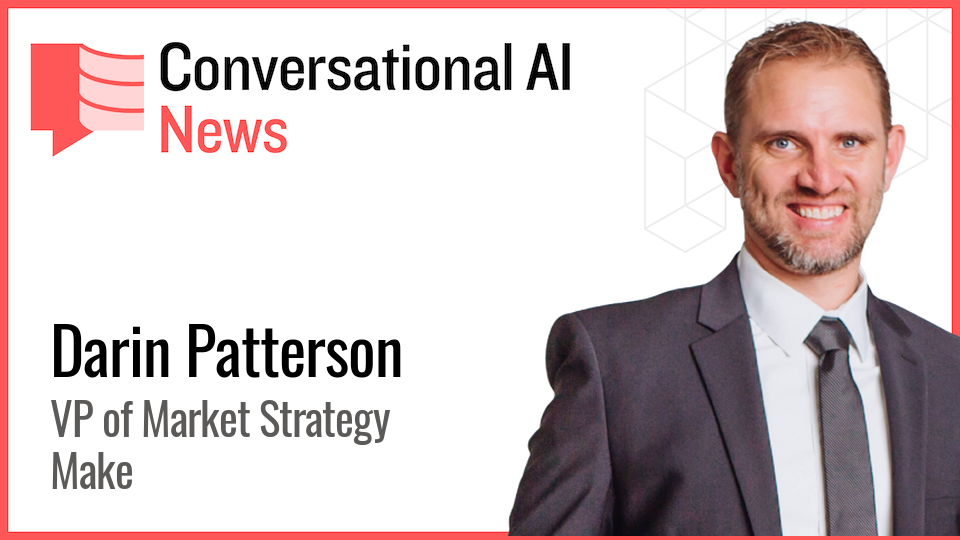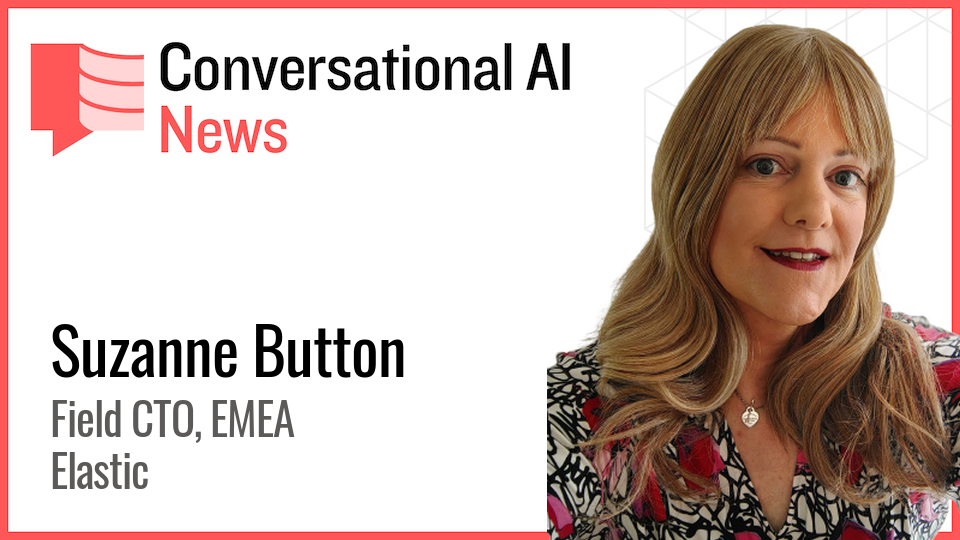Q&A with Andreea Plesea, CEO of DRUID AI

It is an absolute delight to bring you an exclusive interview with DRUID AI's CEO, Andreea Plesea. The company will be known to many as one of the leaders in the Conversational AI space.
Over to you Andreea - my questions are in bold:
As the new CEO stepping into the role after co-founding the company with Liviu Drăgan, how are you carrying forward his vision while putting your own mark on DRUID AI's direction?
I am honored to have been part of the DRUID AI journey from the very beginning, as Liviu's dream to ensure everyone has a virtual assistant that improves the quality of their lives was a dream I shared, as well as the other co-founders on our team.
A dream that I am engaged to take further and give new wings to, as the solutions generated on our Agentic AI-driven platform are increasingly recognized globally for their performance in helping businesses streamline processes and increase work efficiency.
Can you walk us through your journey from co-founder to CEO and your background in AI solution implementation?
I have been passionate about computer science and innovation my entire career, which is why I pursued a doctoral degree in artificial intelligence from the early stages of the technology development. After years of building my business acumen by working on building enterprise software solutions, as a founder of DRUID AI, I've bridged the gap between cutting-edge AI technology, practical business needs and real-world impact across industries.
How do you differentiate Druid AI's approach from other players in the conversational AI market?
By far, our biggest advantage is that our core team is specialized in building solutions for enterprises; we know our customers' businesses and we can relate to their needs. We get them, not only answer them. This is why our AI solutions have Agentic orchestration capabilities and so much flexibility in terms of integrating with other technologies.
We have a fast go-live time, not to mention a strong analytics dashboard with KPIs that are closely monitored and continuously improved. Our solutions aren't just smart, they execute.
How does Druid AI view the evolution from simple chatbots to more agentic AI systems?
We see conversational AI moving towards intelligent teammates rather than mere question-answer portals by combining large-language models with low-code process automation and decision-management modules. Our agentic systems proactively surface insights, trigger multi-step workflows, from scheduling meetings to generating nuanced reports and learn from each interaction to optimize outcomes.
This approach transforms AI from a passive responder into a strategic partner that anticipates needs, reduces manual handoffs and continuously improves itself to drive tangible business value.
What types of organizations are seeing the most success with Druid AI's platform?
One of the main business needs our solutions answer to is managing and orchestrating actions that streamline volumes of data, volumes of customers and/or volumes of employees, thus freeing precious time for people to handle tasks where their presence is vital. This is why the first industries to adopt AI solutions were healthcare, banking and financial services, as well as retail and higher education, among others.
These are industries for which DRUID AI developed advanced solutions that made information easily accessible both internally and externally for better management of resources and time.
Can you share some specific examples of how your 300+ customers are using conversational AI to transform their operations?
Starting from an intelligent solution to handle student inquiries outside working hours, our AI Agent GUS from South Georgia University now orchestrates both internal and external processes, such as student enrollment and orientation, or compulsory administrative tasks, as well as university staff assistance and financial aid and billing. Following its success, six other US universities have already become DRUID AI customers.
Optegra, a European leader in ophthalmology, aimed to improve its patient communication and automate appointment scheduling and routine check procedures, freeing medical staff to focus more on patients who need it most.
One year later, 40% of appointments are scheduled automatically and over 60% of post-op assessments are now conducted through the DRUID AI agent (case study here). More automation is underway, with the chain of clinics expanding their AI initiatives with activity orchestration solutions.
How are customers leveraging agentic AI capabilities to handle more complex, multi-step processes?
Customers are harnessing agentic AI to orchestrate end-to-end workflows, such as automated employee onboarding, multi-stage procurement approvals and complex claims processing, by embedding our AI agents into their existing systems to trigger sequential tasks, validate datam and escalate exceptions in real-time.
These intelligent agents not only execute each step, from form population and policy checks to stakeholder notifications, but also learn from outcomes to refine future processes, enabling teams to focus on exceptions and strategy rather than manual handoffs.
As a result, organizations are achieving faster business processes, fewer errors and measurable productivity gains while scaling intricate operations and increasing efficiency.
How important is your 200+ partner network to Druid AI's growth strategy?
At DRUID AI, our 200+ partner network is a foundational pillar of our growth strategy. As we expand across geographies and industries, they provide in-market expertise, vertical know-how and delivery capacity. They help us scale faster, extend our reach and co-design use-case packages that resonate locally and deliver measurable business value.
Their domain expertise enables us to co-design scalable, replicable conversational and agentic AI solutions that are not only technically robust but also aligned to real operational pain points, accelerating adoption cycles and enhancing stakeholder alignment. They don't just support our pipeline, they amplify it, sourcing new opportunities and driving co-sell velocity through synchronized execution.
And when it comes to delivery, our partner ecosystem extends DRUID's capacity with proven technical capabilities. This end-to-end alignment, from design to deployment, makes our partner network not just a growth lever but a core enabler of scaling our business.
How do you work with system integrators to deploy conversational AI at enterprise scale?
System integrators (SIs) often partner with conversational and agentic AI platforms to complement their digital transformation offerings, driven by the growing demand for AI-powered solutions. They chose to partner with DRUID AI for its enterprise-grade agentic framework, powerful integration capabilities and extensive library of industry-specific use cases and pre-built templates, enabling faster time-to-value.
DRUID AI's flexibility across deployment models, cloud, hybrid, or on-premise, further enables SIs to meet the compliance and scalability requirements of large enterprises across various sectors such as banking, healthcare, insurance and retail.
Are you seeing partners request more agentic capabilities in their AI solutions?
There's a clear shift in demand from static, rules-based chatbots to agentic AI systems that can understand context, make decisions and carry out multi-step tasks autonomously. Our partners want AI agents that can adapt in real time, handle complexity and deliver measurable business outcomes.
Agentic technology is reshaping how organizations think about conversational AI: it's no longer about predefined workflows, but about creating human-centric experiences that evolve with the user and the business.
What key metrics do you track to measure the success of conversational AI implementations?
Everything starts and ends with ROI – the effectiveness of our solutions in the customer's overall business and this is why we have developed quite a complete tool of measuring the impact of AI Agents. No less important are metrics that verify the volume, accuracy and promptitude of the AI Agent's answers and solutions, as well as KPIs connected to agent level of usability.
How do success metrics change when moving from reactive chatbots to proactive agentic systems?
They change completely, starting with a significantly higher usage rate, more messages and fewer failed interactions (interactions with an agent that don't result in a specific action). Not only do they come closer to natural language, but the agency—the AI agent's ability to proceed with an action on its own and manage business processes autonomously—also makes the interaction much faster and more efficient.
With 60% of revenue coming from the US market, how do you measure international expansion success?
We pride ourselves on being able to reach customers worldwide, beyond the US market and one of our main objectives for the next few years is to expand into more regions and establish our own local teams in key geographies while tracking regional revenue growth, feature adoption rates and customer satisfaction.
Where do you see the conversational AI market heading in the next 2-3 years?
McKinsey indicates that approximately 50% of enterprises will significantly expand their AI budgets, with conversational technologies becoming a key investment focus due to measurable impacts on productivity, cost savings and customer engagement.
Additionally, we are already noticing a shift toward more advanced, agentic AI platforms capable of handling complex, multi-step tasks independently. These sophisticated agents will utilize Agentic AI technology, contextual understanding and integration with backend enterprise systems to enable proactive, personalized and context-aware interactions across different communication channels. As the market develops, businesses will focus more on scalability, security, regulatory compliance and real-time analytics, increasing their reliance on agentic AI for strategic processes and decision-making across industries.
What's your perspective on the shift toward more agentic AI systems that can take autonomous actions?
Markets are shifting from reactive tools to autonomous agents that deeply connect with backend systems, enabling proactive decision-making, coordinated task execution and real-time analytics. Organizations that adopt this shift early are likely to outperform competitors by building more scalable, efficient and customer-focused operations.
How do you see agentic AI transforming customer service and employee productivity?
It is no longer just an opinion – we can already see transformation occurring with our customers. Some customer-facing business processes are now handling 60-70% of interactions through autonomous agents, which allows people to focus on tasks that require human intervention. The high approval rate from customers demonstrates this success, especially as they automate even more processes with Agentic AI solutions.
What are the biggest challenges still facing enterprise adoption of agentic conversational AI?
As enterprises move toward agentic AI, the main challenges we face are integration, data privacy, governance and user trust. Connecting new AI capabilities to legacy systems can be complex, but with the right partners and planning, it's entirely achievable.
Data privacy remains a top priority and rightly so, but today's platforms are evolving to meet those standards by design. Governance involves building transparency and accountability into how AI decisions are made, presenting an opportunity to lead with clarity.
Most importantly, trust is built through consistency. When people see AI delivering real value, accurately and reliably, they begin to embrace it. I believe we're at the tipping point where technology, regulation and adoption are aligning and organizations that lean in now will lead the next chapter of enterprise transformation.
Thank you very much, Andreea!
Read more about Andreea on her LinkedIn profile and find out more about her company at www.druidai.com.




